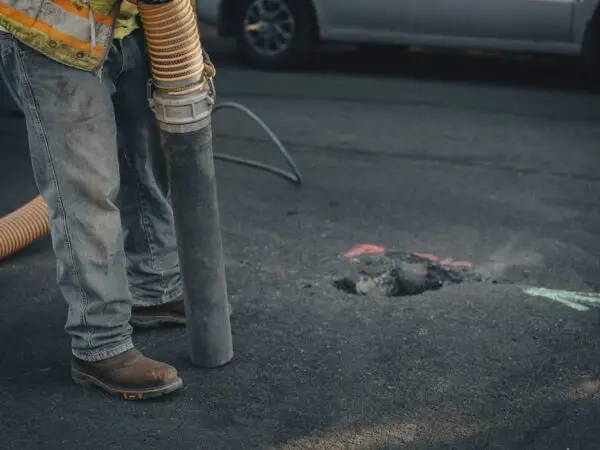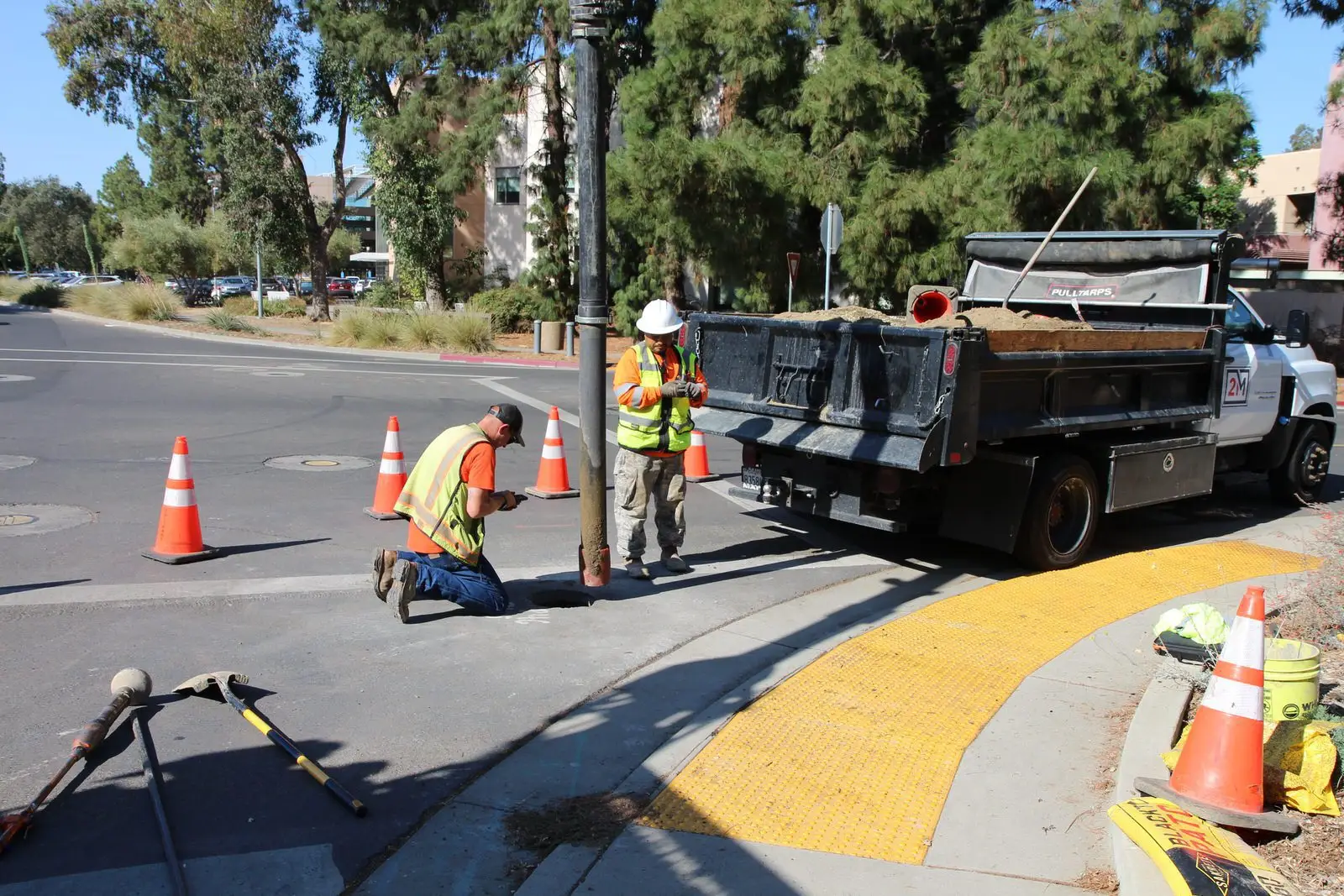In the world of construction, the term “daylighting” has nothing to do with the sun or natural light. Instead, it refers to a method used to expose underground utilities, like pipes and cables, in a non-destructive manner. This technique is also called potholing, a vital service in utility locating and construction projects. Let’s break it down in a way that’s both informative and easy to digest.
The Basics of Daylighting and Potholing
Daylighting is a process where pressurized water or air is used to remove soil and uncover underground utilities. This method, also known as hydro or air excavation, is incredibly precise and significantly reduces the risk of damaging existing infrastructure compared to traditional digging methods. Potholing, which involves creating small, precise holes to verify the location and depth of utilities, is an essential component of daylighting.
Why Daylighting and Potholing Matter
- Safety First: One of the primary reasons for using daylighting and potholing is to enhance safety. Traditional excavation methods, like using a backhoe, can easily damage utilities, leading to costly repairs and potentially dangerous situations. Daylighting and potholing provide a clear view of what’s underground, allowing workers to avoid these hazards. Also don’t forget to call in an 811 ticket.
- Cost Efficiency: While the initial setup for daylighting and potholing might seem pricey, the cost savings from avoiding utility damage and the associated downtime more than make up for it. Imagine hitting a gas line or a fiber optic cable – the costs can skyrocket quickly, not to mention the costs to your company’s brand image.
- Precision: Daylighting and potholing offer unmatched precision. By using pressurized water or air, workers can carefully and accurately remove soil from around utilities without causing any harm. This is especially important in congested urban areas where utilities are often crammed together in a limited space.
- Environmental Benefits: These methods are also more environmentally friendly. Traditional excavation can lead to significant soil disruption and erosion. Daylighting and potholing minimize soil displacement, preserving the natural landscape and reducing environmental impact.
The Daylighting and Potholing Process
Here’s a step-by-step look at how daylighting and potholing typically work:
- Site Assessment: Before starting, the site is assessed to understand the layout of underground utilities. This often involves using ground-penetrating radar (GPR) or other locating techniques.
- Setup: The daylighting and potholing equipment, usually a vacuum truck, is brought to the site. This truck will have a hose that delivers pressurized water or air to the ground and a vacuum system to remove the loosened soil.
- Excavation: The operator directs the pressurized stream to the area where the utilities are located. The soil is carefully removed and sucked up by the vacuum, exposing the utilities without causing damage.
- Inspection and Documentation: Once the utilities are exposed, they can be inspected, repaired, or documented as needed. This step ensures that the utility’s location and condition are accurately recorded for future reference.
- Backfilling and Restoration: After the necessary work is completed, the excavated area is backfilled and restored to its original condition.
 Applications of Daylighting and Potholing
Applications of Daylighting and Potholing
Daylighting and potholing are used in various construction and maintenance activities, including:
- Utility Locating: Precisely identifying and mapping the location of underground utilities using potholing techniques.
- Repairs and Maintenance: Accessing utilities for repairs or maintenance without causing additional damage.
- Environmental Cleanup: Removing contaminated soil around utilities safely and efficiently.
- Construction Projects: Ensuring safe excavation around existing utilities during new construction through accurate potholing.
Conclusion
Daylighting and potholing in construction are game-changers, offering a safer, more efficient, and environmentally friendly way to expose underground utilities. By understanding and utilizing these methods, construction projects can avoid the pitfalls of traditional excavation, ensuring a smoother, more cost-effective process. So, next time you hear the terms “daylighting” or “potholing” on a construction site, you’ll know it’s not about catching rays but about keeping things safe and sound underground.


 Applications of Daylighting and Potholing
Applications of Daylighting and Potholing